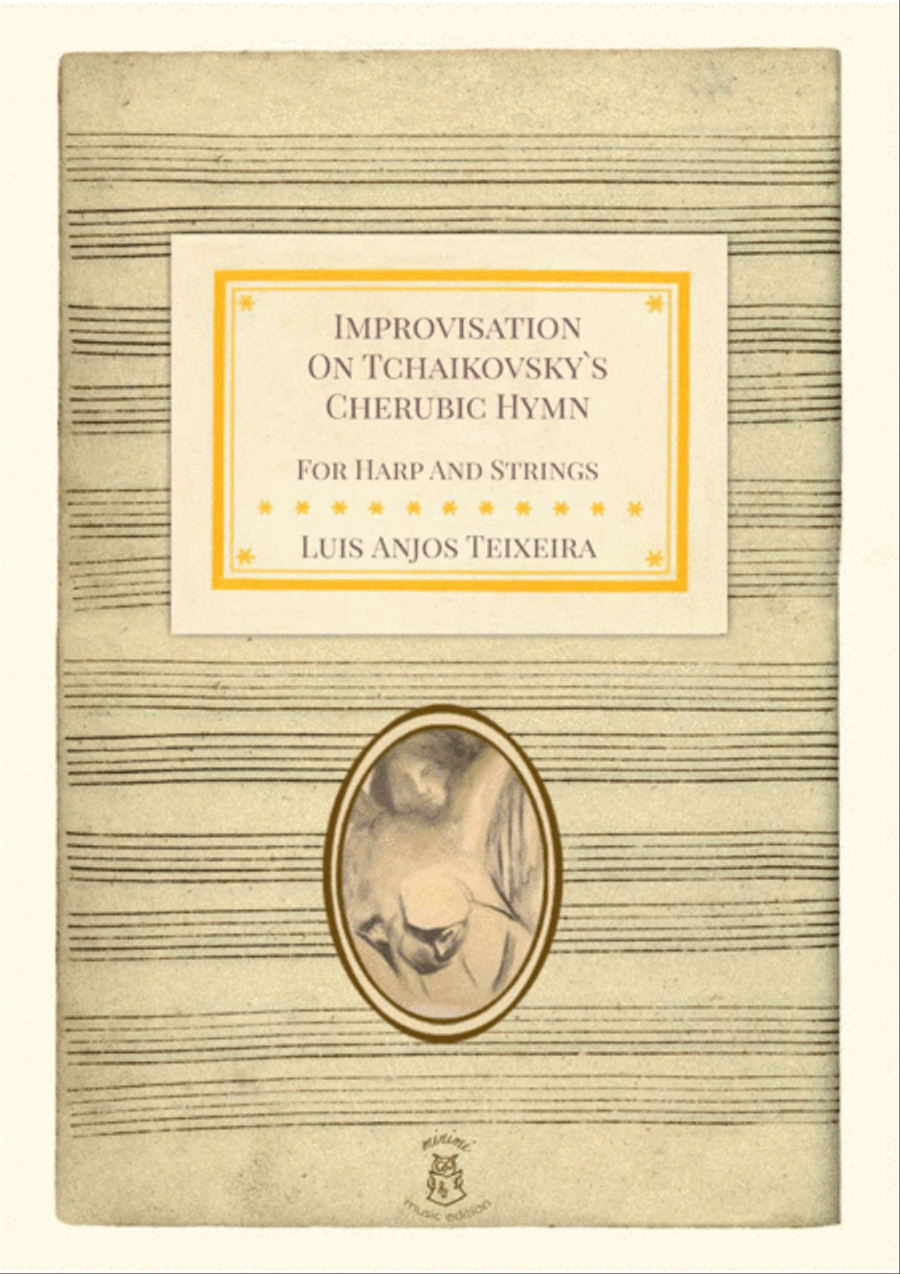String Orchestra - Level 2 - Digital Download SKU: A0.889429 Composed by Luis Anjos Teixeira. Christmas,Concert,Contemporary,Easter,Standards. Score and parts. 17 pages. Luis Anjos Teixeira #4727333. Published by Luis Anjos Teixeira (A0.889429). „Improvisation On Tchaikovsky`s Cherubic Hymn. It is an original Harp improvisation to be accompanied by an adaptation for strings inspired by Tchaikovsky`s choir piece „Cherubic Hymn. The harmonic structure of Tchaikowky`s original work has been faithfully reproduced, so all credits for this piece goes to him. Rather than an arrangement, the outcome of this adventurous experience resulted in an improvisation for the Harp. With the added melodies on the Harp and the stringed instrumental caracter of the orquestral adaptation, the piece gains a stronger tone contrast, keeping at the same time its deep spiritual beauty, thus bringing it to a wider range of public and performance choices. it is very easy to perform, yet it moves deeply both performer and public. The piece is appropriate for beginner students. It can be used in serious concerts and all kinds of cultural events. It is a very Spiritual piece, it induces a wonderful mood in Baptism or Christmas celebrations. One can get married to it. The piece is also appropriate to honor someone in a funeral. Although this score was composed in full intent to be performed as written, the Harp part can be played by itself and the orquestral arrangement from the Hymn can also be performed without the Harp. This score was conceived so that without adaptations, the Harp the orchestra and the original Choir could perform at the same time. Or intercalated „Ad Lieb, the Harp with the choir, or the orquestra with the choir. Instead of a full string orquestra one can also use just a string quartet and a doublebass. A Little Historical Note. „The Cherubic Hymn is part of the Liturgy of St. John Chrysostom written in the fourth century by the Byzantine saint, honored as such by both Eastern Orthodox and Roman Catholic churches. In the context of the liturgy, the hymn is sung during the most mystical and spiritual part of the service as a prelude to the transubstantiation of bread and wine into the real presence of Our Lord. Pyotr Ilyich Tchaikovsky, the inspiring Master and genial composer with whom I had the happy causality to write this improvisation or „collab was born in; 25 April/7 May 1840 – 25 October/6 November 1893, was a Russian composer of the late Romantic period, he created an outstanding number of unique musical masterpieces. Tchaikovsky was honored in 1884, by Emperor Alexander III, and awarded a lifetime pension. Thanks to Claudia Eppelt for the all the Love the wonderful painting and cover design, this work is dedicated to her. Special Thanks to Tchaikovsky, Nina and Stray Queen Mimi, Carlinhos, Maria Pontinha, Maria Joaninha, Schwarzenegger, Maria Koboldinha. For all Living beings on Earth, for all our Ancestors, Thank You for all of You All Your Love and Compassion. Love Forever. Disclaimer: The score was written on Finale and the sound file was produced with Garritan instruments. Thank You very much that You toke Your Time to read this text and to listen the file. I hope You enjoy it, Sheers…
